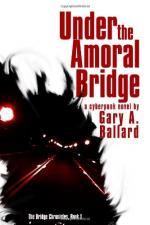|
This section contains 7,237 words (approx. 25 pages at 300 words per page) |

|
SOURCE: Hollinger, Veronica. “Cybernetic Deconstructions: Cyberpunk and Postmodernism.” Mosaic 23, no. 2 (spring 1990): 29-44.
In the following essay, Hollinger views cyberpunk in its relation to postmodernism, genre science fiction, and literary realism.
If, as Fredric Jameson has argued, postmodernism is our contemporary cultural dominant (“Logic” 56), so equally is technology “our historical context, political and personal,” according to Teresa de Lauretis: “Technology is now, not only in a distant, science fictional future, an extension of our sensory capacities; it shapes our perceptions and cognitive processes, mediates our relationships with objects of the material and physical world, and our relationships with our own or other bodies” (167). Putting these two aspects of our reality together, Larry McCaffery has recently identified science fiction as “the most significant evolution of a paraliterary form” in contemporary literature (xvii).
Postmodernist texts which rely heavily on science-fiction iconography and themes have proliferated since the 1960s, and it can...
|
This section contains 7,237 words (approx. 25 pages at 300 words per page) |

|


